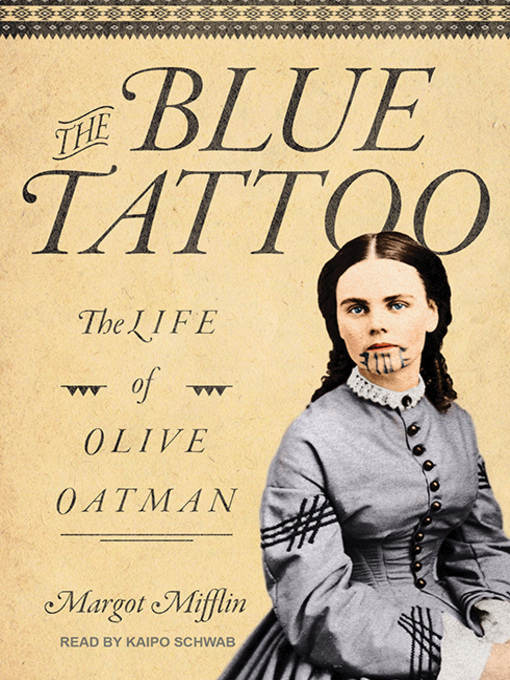The Blue Tattoo: The Life of Oliva Oatman by Margot Mifflin
Oatman’s story has since become legend, inspiring artworks, fiction, film, radio plays, and even an episode of Death Valley Days starring Ronald Reagan. Its themes, from the perils of religious utopianism to the permeable border between civilization and savagery, are deeply rooted in the American psyche. Oatman’s blue tattoo was a cultural symbol that evoked both the imprint of her Mohave past and the lingering scars of westward expansion. It also served as a reminder of her deepest secret, fully explored here for the first time: she never wanted to go home.
Review: In 1851, Olive Oatman was a young teenager traveling west with her family when they were attacked and brutally killed by Yavapai Indians. Olive and her younger sister were captured and lived as slaves to her captors for a year before being traded to the Mohave, who tattooed her face and embraced her as a member of their family. Six years after first being taken from her family, she was ransomed back to white society. She became an instant celebrity but her traumatic past and the rumors that swirled around her about her time in captivity followed her for the rest of her life.
Olive Oatman went through significant trauma at the tender age of 13. First, watching her family be murdered and losing all connection to her culture and first language. Later, she watched her younger sister and who she believed to be her only surviving sibling starve to death during a famine. I can only imagine how difficult it was to then once again have to tell her adopted Mohave family goodbye. Once returned to white society, she was the object of intense scrutiny, with rumors about her sexuality activity among the Mohave and secret children left behind that dogged her for the rest of her life. But it was nice to see that was reunited with her sole surviving brother and eventually seems to have had a happy marriage.
This was a very brief book. Despite the author's research, it seems there is just not a wealth of material on Olive Oatman. Rather than fleshing it out with some more detailed background history on the Mohaves or western pilgrimage, the author spent a lot of time detailing Olive's depictions in popular culture. While interesting, it wasn't particularly relevant to her actual life story. But overall, this was an interesting biography about a woman whose remarkable life story truly captured popular attention and interest for decades.
Stars: 3.5



Comments
Post a Comment